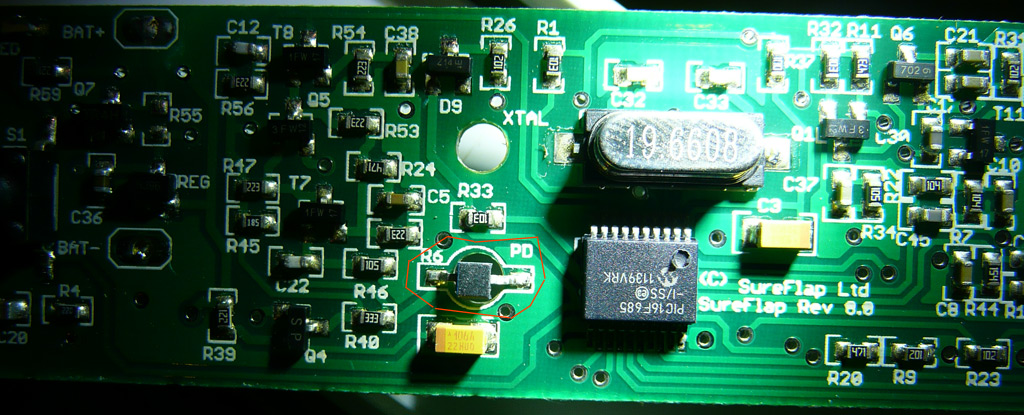I'm not very professional when it comes to electronics. Unfortunately I destroyed a SMP IR photo diode when I unsoldered it. It was together with a IR LED part of a light barrier for an electronic cat flap. My plan was to relocate the LED and the diode into a separate housing.
So I'm looking now for a replacement for both of them. The LED is still intact so I guess it will not be too hard to find something similar. I even could use the original LED but I don't know the IR wavelength. For the diode one can only guess. The cat flap runs with four 1,5 Volt AA batteries.
Here a picture from the board. I marked the destroyed photo diode in red.

Any idea what I could try as a (non SMD) replacement?
Thanks,
Thomas
So I'm looking now for a replacement for both of them. The LED is still intact so I guess it will not be too hard to find something similar. I even could use the original LED but I don't know the IR wavelength. For the diode one can only guess. The cat flap runs with four 1,5 Volt AA batteries.
Here a picture from the board. I marked the destroyed photo diode in red.

Any idea what I could try as a (non SMD) replacement?
Thanks,
Thomas

